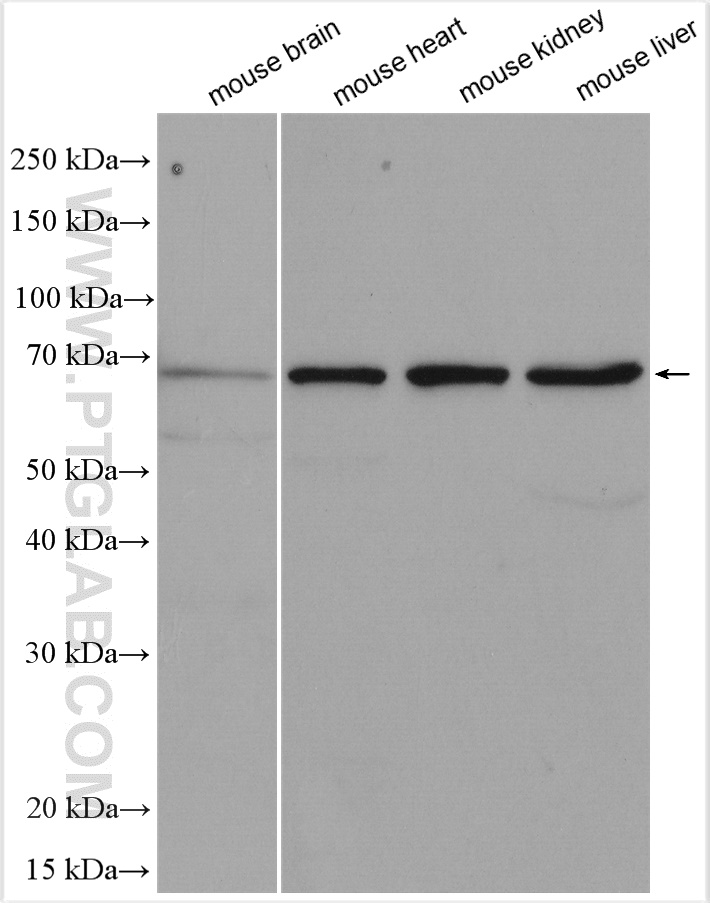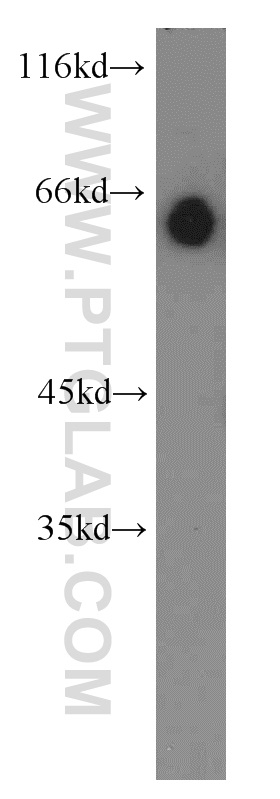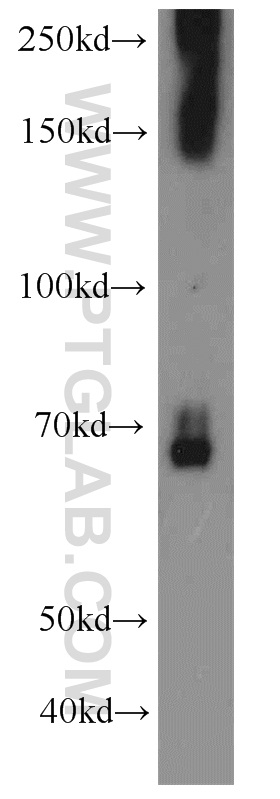STAU2 Polyclonal antibody
STAU2 Polyclonal Antibody for WB, IHC, ELISA
Host / Isotype
Rabbit / IgG
Reactivity
human, mouse, rat
Applications
WB, IHC, ELISA
Conjugate
Unconjugated
验证数据展示
经过测试的应用
| Positive WB detected in | mouse heart tissue, mouse kidney tissue, mouse brain tissue, mouse liver tissue |
| Positive IHC detected in | mouse brain tissue Note: suggested antigen retrieval with TE buffer pH 9.0; (*) Alternatively, antigen retrieval may be performed with citrate buffer pH 6.0 |
推荐稀释比
| Application | Dilution |
|---|---|
| Western Blot (WB) | WB : 1:500-1:2000 |
| Immunohistochemistry (IHC) | IHC : 1:50-1:500 |
| It is recommended that this reagent should be titrated in each testing system to obtain optimal results. | |
| Sample-dependent, Check data in validation data gallery. | |
发表文章中的应用
| WB | See 1 publications below |
产品信息
15998-1-AP targets STAU2 in WB, IHC, ELISA applications and shows reactivity with human, mouse, rat samples.
| Tested Applications | WB, IHC, ELISA Application Description |
| Cited Applications | WB |
| Tested Reactivity | human, mouse, rat |
| Cited Reactivity | human |
| Immunogen | STAU2 fusion protein Ag8482 种属同源性预测 |
| Host / Isotype | Rabbit / IgG |
| Class | Polyclonal |
| Type | Antibody |
| Full Name | staufen, RNA binding protein, homolog 2 (Drosophila) |
| Synonyms | 39K2, 39K3, STAU2 |
| Calculated Molecular Weight | 570 aa, 62 kDa |
| Observed Molecular Weight | 62-66 kDa |
| GenBank Accession Number | BC008370 |
| Gene Symbol | STAU2 |
| Gene ID (NCBI) | 27067 |
| RRID | AB_10863121 |
| Conjugate | Unconjugated |
| Form | Liquid |
| Purification Method | Antigen affinity purification |
| UNIPROT ID | Q9NUL3 |
| Storage Buffer | PBS with 0.02% sodium azide and 50% glycerol pH 7.3. |
| Storage Conditions | Store at -20°C. Stable for one year after shipment. Aliquoting is unnecessary for -20oC storage. |
实验方案
| Product Specific Protocols | |
|---|---|
| WB protocol for STAU2 antibody 15998-1-AP | Download protocol |
| IHC protocol for STAU2 antibody 15998-1-AP | Download protocol |
| Standard Protocols | |
|---|---|
| Click here to view our Standard Protocols |












